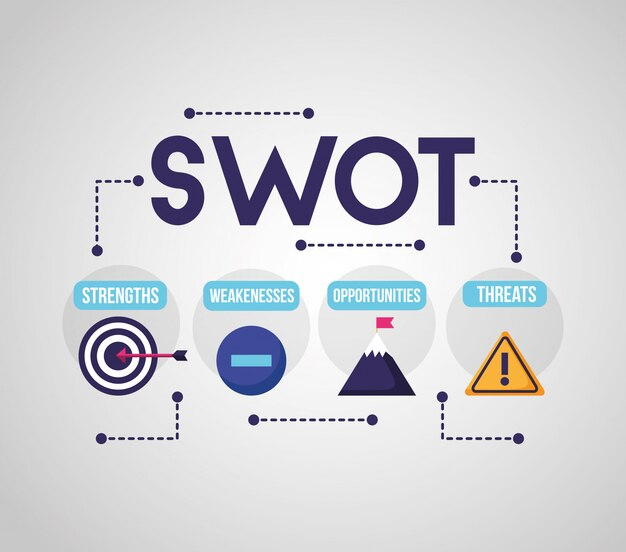Key Takeaways
- Strategic Launchpad: Uncover the blueprint for a successful e-commerce venture in 2024, from market-savvy niche selection to the finesse of customer-centric strategies.
- Tech-Forward Triumph: Navigate the digital landscape with mastery, leveraging emerging technologies like AI, AR, and cutting-edge SEO strategies for enhanced visibility.
- Scaling Excellence: Learn from industry giants and scale your business by embracing operational efficiency, global market expansion, and a customer experience that resonates in the dynamic e-commerce arena of 2024.
In the vast tapestry of commerce, 2024 emerges as a defining chapter, beckoning entrepreneurs to chart new territories within the dynamic realm of e-commerce.
This blog serves as your indispensable guide, a meticulously curated compendium of knowledge designed to propel you into the world of profitable online businesses.
As we stand on the precipice of a digital revolution, the importance of embracing e-commerce ventures cannot be overstated.
In this introduction, we’ll navigate through the why, the when, and the immense potential that the year 2024 holds for those aspiring to build a thriving online enterprise.

The Digital Resurgence: Understanding the E-Commerce Landscape in 2024
As we venture into the heart of this transformative era, it becomes imperative to grasp the fundamental shifts in consumer behavior, technological advancements, and market dynamics that collectively shape the e-commerce landscape of 2024.
The resurgence of digital transactions, fueled by an ever-connected global population, presents unparalleled opportunities for those seeking to establish profitable ventures.
In this section, we dissect the intricacies of the current e-commerce ecosystem, arming you with insights crucial for navigating the complexities of this lucrative digital frontier.
Capitalizing on the E-Commerce Boom: Seizing the Opportunity for Profitability
Why now? This segment explores the pulsating pulse of the e-commerce boom in 2024, unravelling the statistics, trends, and success stories that underscore the undeniable potential for profitability.
As the world witnesses an exponential rise in online transactions, businesses that strategically position themselves within this landscape are poised not only for survival but for unprecedented success.
Discover the compelling reasons behind the urgency to plunge into the e-commerce realm and the myriad possibilities that await those who dare to seize the opportunity.
Navigating the Digital Odyssey: Your Comprehensive Guide to E-Commerce Success
Embarking on an e-commerce venture can be both thrilling and daunting. In this section, we set the stage for an in-depth exploration of the critical steps required to initiate and sustain a profitable online business.
From the meticulous selection of a niche to the establishment of a user-friendly website, we leave no stone unturned.
This comprehensive guide is not merely a theoretical discourse but a roadmap infused with practical insights, ensuring that you are not only well-informed but equipped to thrive in the dynamic and competitive world of e-commerce.
In the subsequent chapters, we’ll delve into the intricacies of market research, niche selection, business planning, website setup, product sourcing, SEO strategies, and much more.
Each segment is crafted with the dual purpose of enlightening you about the nuances of e-commerce in 2024 and optimizing your content for search engines, ensuring that you not only gain knowledge but also enhance your online visibility in the process.
So, fasten your seatbelts, and let’s embark on this digital odyssey together.
But, before we venture further, we like to share who we are and what we do.
About AppLabx
From developing a solid marketing plan to creating compelling content, optimizing for search engines, leveraging social media, and utilizing paid advertising, AppLabx offers a comprehensive suite of digital marketing services designed to drive growth and profitability for your business.
AppLabx is well known for helping companies and startups use e-commerce marketing to drive web traffic to their websites and web apps.
At AppLabx, we understand that no two businesses are alike. That’s why we take a personalized approach to every project, working closely with our clients to understand their unique needs and goals, and developing customized strategies to help them achieve success.
If you need a digital consultation, then send in an inquiry here.
How To Start a Profitable E-Commerce Business in 2024
- Market Research and Niche Selection
- Creating a Solid Business Plan
- Setting Up the E-Commerce Website
- Product Sourcing and Inventory Management
- Secure Payment and Order Fulfillment
- Implementing Effective SEO Strategies
- Utilizing Social Media for Marketing
- Customer Service and Retention
- Scaling Your E-Commerce Business
1. Market Research and Niche Selection

Understanding Consumer Trends and Preferences
Google Trends Analysis: Harness the power of Google Trends to identify emerging search queries and consumer interests. Analyzing trending topics and search patterns can reveal opportunities ripe for exploration.

Social Media Listening Tools: Leverage tools like Brandwatch or Hootsuite to monitor conversations on social media platforms. Analyzing consumer sentiments and preferences on platforms such as X (formerly Twitter) and Instagram provides invaluable insights.
Survey and Feedback Platforms: Engage with potential customers using platforms like SurveyMonkey. Directly collecting feedback and opinions offers a nuanced understanding of consumer needs and desires.
Assessing Market Size and Potential
Statista Insights: Access market size data across various industries through Statista. Understanding the current market size and growth projections is crucial for gauging the potential of your chosen niche.
Government Reports and Publications: Explore reports from government agencies such as the U.S. Census Bureau or the European Commission for comprehensive market analyses.
Competitor Analysis: Learning from the Best
Semrush for SEO Analysis: Conduct in-depth SEO analyses of competitors using tools like Semrush. Identify keywords driving traffic to their websites and assess their backlink strategies.

Social Media Competitor Tracking: Track competitors on social media platforms using tools like Social Blade. Understand their engagement strategies, content types, and audience interactions.
Decoding Niche Selection for E-Commerce Triumph
Aligning Passion with Profitability
Google Keyword Planner: Utilize Google Keyword Planner to identify keywords related to personal passions. Analyze search volumes and competition to gauge market interest in your chosen niche.
Evaluating Personal Interests: Consider personal hobbies and interests. Aligning an e-commerce venture with personal passions can lead to sustained motivation and creativity.
Analyzing Profitability and Sustainability
Amazon Best Sellers: Explore Amazon’s Best Sellers list to identify popular products in various categories. Analyze customer reviews and ratings to understand product demand and potential profitability.
Evaluate Market Saturation: Use tools like Market Explorer by Shopify to evaluate market saturation in potential niches.
Identifying Target Audience and Unique Selling Proposition (USP)
Social Media Audience Insights: Dive into social media platforms to understand the target audience better. Platforms like Facebook Insights provide demographic data for tailored product offerings.
Crafting a Unique Selling Proposition: Identify what sets the business apart. Whether it’s exceptional customer service or innovative features, a unique selling proposition strengthens brand appeal.
2. Creating a Solid Business Plan
A robust business plan is a compass that guides your e-commerce venture through the dynamic landscape of online commerce.
From defining objectives to projecting financial outcomes, let’s delve into the crucial components of creating a solid business plan that not only charts your course but maximizes your chances of success.

Defining Clear Business Goals and Objectives
SMART Goals: Embrace the SMART (Specific, Measurable, Achievable, Relevant, Time-bound) framework to articulate clear and achievable business goals.
For instance, setting a goal to increase online sales by 20% within the next six months provides a specific target for your e-commerce business.

Long-Term Vision: Outline a long-term vision for your business. Whether it’s becoming a market leader or expanding into international markets, a clear vision provides a roadmap for sustained growth.
Financial Planning: Budgeting for Success
Startup Costs and Initial Investment: Research and calculate the startup costs associated with your e-commerce venture. This includes expenses for website development, inventory, marketing, and any other initial investment.
Revenue Projections: Utilize data from similar e-commerce businesses or industry benchmarks to project revenue. Tools like Shopify’s revenue calculator can aid in estimating potential sales based on various factors.

Expense Forecasts: Outline detailed expense forecasts covering areas such as marketing, operations, and technology. Realistic expense projections help in budgeting effectively and avoiding financial pitfalls.
Marketing Strategy: Digital Alchemy for Brand Building
Digital Marketing Channels: Map out your digital marketing strategy, encompassing channels such as social media marketing, search engine optimization (SEO), and email marketing. Leverage statistics on the effectiveness of these channels in driving e-commerce sales.
Content Calendar: Develop a content calendar outlining the creation and distribution of engaging content. Consistent and valuable content fosters brand loyalty and attracts a broader audience.
Paid Advertising: Allocate a budget for paid advertising campaigns. Platforms like Google Ads and Facebook Ads provide targeted options to reach your ideal audience. Research industry benchmarks for advertising costs to optimize your budget.

Operational Plan: Streamlining Efficiency
Inventory Management System: Implement an efficient inventory management system to avoid stockouts or overstock situations. Utilize data from your market research to forecast demand and optimize stock levels.
Order Fulfillment Strategy: Define a seamless order fulfillment process. Consider partnering with reliable shipping carriers and optimizing delivery times based on customer expectations.
Risk Analysis and Mitigation Strategies
SWOT Analysis: Conduct a SWOT (Strengths, Weaknesses, Opportunities, Threats) analysis to identify internal and external factors impacting your business. Address weaknesses and threats proactively to minimize risks.

Contingency Planning: Develop contingency plans for potential challenges, such as supply chain disruptions or changes in market trends. Being prepared for unforeseen circumstances enhances your business’s resilience.
Monitoring Key Performance Indicators (KPIs)
Conversion Rates: Track conversion rates to measure the effectiveness of your website in converting visitors into customers. Benchmark against industry averages to identify areas for improvement.
Customer Acquisition Cost (CAC): Monitor CAC to understand the cost of acquiring each new customer. Strive to keep this cost within reasonable limits to ensure profitability.
Return on Investment (ROI): Calculate the ROI of your marketing campaigns to assess their effectiveness. Adjust strategies based on the performance of various channels.
3. Setting Up the E-Commerce Website
The foundation of a successful online venture rests upon the shoulders of a well-designed and user-friendly e-commerce website.
In this comprehensive guide, we will unravel the intricacies of setting up a website that not only captivates your audience but also optimizes the user experience for enhanced conversion rates.

Choosing the Right E-Commerce Platform
Shopify: Shopify stands as a behemoth in the e-commerce platform realm. Renowned for its ease of use and robust features, it caters to businesses of all sizes, offering customizable templates and a seamless user interface.
WooCommerce (WordPress): WooCommerce seamlessly integrates with WordPress, providing a versatile platform for businesses looking for flexibility and scalability.
BigCommerce: Known for its scalability and comprehensive feature set, BigCommerce is a solid choice for growing businesses. It boasts high-level security features and excellent SEO capabilities.
Designing a User-Friendly Website
Mobile Responsiveness: Ensure your website is mobile-friendly. Google’s Mobile-Friendly Test can help you assess and improve mobile responsiveness.
Clear Navigation: Implement intuitive navigation that guides users seamlessly through your website. A well-structured menu and clear categorization enhance the user experience and reduce bounce rates.
Optimized Product Pages: Leverage high-quality images and compelling product descriptions.
Securing Your E-Commerce Website
SSL Certification: Instill trust in your customers by securing your website with SSL certification. Not only does this protect sensitive data, but it also contributes to better search engine rankings.
Secure Payment Gateways: Utilize reputable payment gateways like PayPal, Stripe, or Square. The implementation of secure payment methods fosters customer confidence and ensures smooth transactions.

Regular Security Audits: Conduct regular security audits to identify vulnerabilities and potential threats. Platforms like Sucuri and Wordfence offer tools to enhance website security.
Optimizing for Search Engines (SEO)
Keyword Research: Conduct thorough keyword research to identify relevant terms for your products or services. Google’s Keyword Planner can assist in discovering high-value keywords.
Meta Tags and Descriptions: Optimize meta tags and descriptions for each product page. Well-crafted meta tags contribute to higher click-through rates and improved search engine rankings.
Fast Loading Speed: Website speed is a critical factor for user experience and search rankings. Google emphasizes the importance of fast-loading pages. 53% of visits are abandoned if a mobile site takes longer than 3 seconds to load.
Creating a Seamless Checkout Process
Guest Checkout Option: Streamline the checkout process by offering a guest checkout option. 23% of users will abandon their shopping cart if they have to create a new user account.
Multiple Payment Options: Cater to diverse customer preferences by providing multiple payment options.
Transparent Shipping Information: Clearly communicate shipping costs and delivery times during the checkout process.
4. Product Sourcing and Inventory Management
Establishing a robust product sourcing and inventory management strategy is paramount for the success of your e-commerce venture.
In this detailed guide, we’ll delve into the intricacies of sourcing quality products, maintaining optimal inventory levels, and implementing efficient management practices.

Strategies for Effective Product Sourcing
Direct from Manufacturers: Establish direct relationships with manufacturers to source products. This strategy often ensures competitive pricing and a more direct line of communication, reducing the risk of miscommunication or quality issues.
Wholesale Suppliers: Partnering with wholesale suppliers allows you to purchase products in bulk at discounted rates. Platforms like Alibaba and Thomasnet connect businesses with a myriad of global suppliers.

Dropshipping: For a low-risk model, consider dropshipping, where products are shipped directly from suppliers to customers. This minimizes the need for holding inventory, making it a popular choice for e-commerce startups.
Ensuring Product Quality and Compliance
Quality Assurance Protocols: Implement stringent quality control measures. This may involve sample testing, factory visits, or third-party inspections to ensure that the products meet your standards and comply with relevant regulations.
Compliance with Regulations: Stay informed about product regulations and standards. This is particularly crucial when dealing with international suppliers, as different regions may have varying compliance requirements.
Supplier Audits: Regularly audit your suppliers to assess their reliability and adherence to quality standards. Tools like SupplierSelect or Sedex aid in evaluating supplier performance.
Optimizing Inventory Management
Demand Forecasting: Leverage historical sales data and market trends to forecast demand accurately. Tools like demand forecasting software or inventory management systems with predictive analytics can enhance your forecasting capabilities.
Just-in-Time (JIT) Inventory: Implement a Just-in-Time inventory system to minimize excess stock. This approach helps in reducing carrying costs and prevents overstock situations.
ABC Analysis: Classify your products based on their importance and popularity using the ABC analysis method. Allocate resources and attention accordingly, focusing on high-value, high-demand items.
Utilizing Technology for Efficiency
Inventory Management Software: Implement robust inventory management software like TradeGecko, Zoho Inventory, or Orderhive. These tools streamline processes, automate tasks, and provide real-time insights.
Barcode Scanning Systems: Utilize barcode scanning systems to enhance accuracy and efficiency in inventory tracking. This minimizes errors associated with manual data entry and speeds up order processing.
Integration with E-Commerce Platforms: Integrate your inventory management system with your e-commerce platform.
This integration ensures seamless communication between your storefront and your inventory, reducing the likelihood of overselling or stockouts.
5. Secure Payment and Order Fulfillment
Creating a seamless and secure payment process, coupled with efficient order fulfillment, is the bedrock of customer satisfaction and trust in e-commerce.
In this extensive guide, we will navigate the intricacies of implementing secure payment methods and optimizing the fulfillment process to ensure a positive and secure shopping experience for your customers.

Implementing Secure Payment Methods
Encryption and SSL Certification: Secure your payment transactions with robust encryption protocols. SSL (Secure Socket Layer) certification is a fundamental component, encrypting data and ensuring secure communication between the customer’s browser and your website.
PCI DSS Compliance: Adhere to Payment Card Industry Data Security Standard (PCI DSS) compliance. PCI DSS sets forth security standards to protect cardholder data during payment transactions, safeguarding against data breaches.
Tokenization: Employ tokenization to enhance payment security. Tokenization replaces sensitive data with unique tokens, reducing the risk of data exposure in the event of a security breach.
Offering Diverse and Trusted Payment Options
Credit Cards and Digital Wallets: Support major credit cards and popular digital wallets like PayPal, Apple Pay, and Google Pay. Providing a variety of payment options accommodates diverse customer preferences and fosters trust.
Alternative Payment Methods: Explore alternative payment methods based on your target audience.
Buy Now, Pay Later Options: Integrate “Buy Now, Pay Later” solutions. This flexible payment approach, exemplified by services like Afterpay or Klarna, appeals to a broader customer base, promoting higher conversion rates.
Ensuring Smooth and Transparent Order Fulfillment
Real-Time Order Tracking: Implement real-time order tracking for customers. The ability to track orders from shipment to delivery enhances transparency and customer satisfaction.
Efficient Warehouse Management: Optimize warehouse operations for efficient order fulfillment. Implement technologies like barcode scanning, RFID, or automated picking systems to minimize errors and enhance speed.
Partnering with Reliable Shipping Carriers: Choose reliable shipping partners to ensure timely and secure delivery. Collaborating with established carriers minimizes the risk of shipping delays and provides a positive post-purchase experience.
Addressing Cart Abandonment through Streamlined Checkout
Guest Checkout Option: Simplify the checkout process by offering a guest checkout option.
Transparent Shipping Costs: Clearly communicate shipping costs early in the checkout process.
Abandoned Cart Recovery Strategies: Implement automated abandoned cart recovery emails.
6. Implementing Effective SEO Strategies
Unlocking the potential of your e-commerce venture requires a mastery of Search Engine Optimization (SEO).
In this extensive guide, we will delve into the intricate world of SEO, providing actionable strategies to enhance your online visibility, drive organic traffic, and propel your e-commerce business to new heights.

Conducting Comprehensive Keyword Research
Utilize Google Keyword Planner: Leverage the power of Google Keyword Planner to identify relevant keywords for your products or services. Understand search volumes, and competition, and discover long-tail keywords that align with your business.
Long-Tail Keyword Optimization: Focus on long-tail keywords that reflect user intent. Long-tail keywords often have less competition and can be instrumental in attracting highly targeted traffic.
Competitor Analysis: Analyze the keywords your competitors are targeting. Tools like Semrush or Ahrefs can provide insights into your competitor’s organic search strategies, helping you refine your approach.

On-Page SEO Optimization
Optimize Meta Titles and Descriptions: Craft compelling meta titles and descriptions that not only incorporate your target keywords but also entice users to click through to your website. This can significantly impact your click-through rates.
Header Tags and Content Structure: Use header tags (H1, H2, H3, etc.) to structure your content logically. This not only enhances the readability of your content but also provides search engines with a clear understanding of the hierarchy of information on your page.
Image Optimization: Optimize images with descriptive alt text and file names. Search engines use alt text to understand the content of images, contributing to improved rankings and accessibility.
Strategic Content Creation
Quality and Relevant Content: Develop high-quality, relevant, and engaging content. Search engines prioritize content that provides value to users. This can be in the form of product descriptions, blog posts, or guides related to your niche.
Leverage Video Content: Video content continues to gain prominence in search results. Create product videos, tutorials, or behind-the-scenes content to diversify your content strategy and enhance user engagement.
Regularly Update Content: Regularly update and refresh your content to signal to search engines that your website is active and current. This can positively impact your rankings, especially for evergreen content.
Technical SEO Best Practices
Mobile Optimization: Ensure your website is mobile-friendly. With the increasing use of mobile devices for online shopping, Google prioritizes mobile-friendly websites in its rankings.
Page Speed Optimization: Optimize your website’s loading speed.
Structured Data Markup: Implement structured data markup (schema markup) to provide search engines with additional context about your content. This can enhance the visibility of rich snippets in search results.
Building Quality Backlinks
Guest Blogging: Contribute guest posts to reputable websites in your industry. Guest blogging not only establishes your authority in your niche but also provides valuable backlinks.
Social Media Promotion: Actively promote your content on social media platforms. Social signals, such as shares and likes, can indirectly impact your SEO rankings.
Participate in Industry Forums and Communities: Engage in industry-related forums and communities. Building relationships and sharing insights can lead to natural backlinks and increased visibility.
7. Utilizing Social Media for Marketing
In the dynamic landscape of digital marketing, leveraging social media platforms is not just an option; it’s a necessity for e-commerce success.
This extensive guide delves into the strategies, tools, and statistics that empower businesses to harness the full potential of social media for marketing and brand growth.

Choosing the Right Social Media Platforms
Understanding Your Audience: Identify the platforms where your target audience is most active. For instance, if your products cater to a visually-driven audience, platforms like Instagram or Pinterest may be more effective.
Facebook for Diverse Audiences: Facebook remains a versatile platform suitable for a wide range of businesses. Its robust advertising features allow for precise audience targeting.

Visual Storytelling on Instagram: Leverage features like Instagram Stories and IGTV for immersive visual storytelling.
Creating Engaging Content
Utilize Visual Content: Visuals are crucial for social media success. Posts with images receive 2.3 times more engagement than those without. Leverage high-quality images, infographics, and videos to captivate your audience.
Interactive Content: Encourage engagement with polls, quizzes, and interactive content. Interactive posts receive significantly higher engagement rates, fostering a sense of community and involvement.
User-Generated Content (UGC): Capitalize on user-generated content. UGC not only provides authentic testimonials but also encourages a sense of community around your brand. Encourage customers to share their experiences and showcase their purchases.
Leveraging Social Media Advertising
Facebook Ads Precision: Harness the power of Facebook Ads for precise targeting. With detailed demographic and interest-based targeting options, businesses can reach specific audience segments, increasing the relevance of their ads.
Instagram Shoppable Posts: Utilize Instagram Shoppable Posts to transform your feed into a virtual storefront. Shoppable posts allow users to seamlessly discover and purchase products directly through the platform.
Pinterest for Discovery: Leverage Pinterest’s visual search capabilities for product discovery. Pinterest is often used as a platform for users seeking inspiration and discovering new products.
Building a Community and Fostering Engagement
Consistent Posting Schedule: Maintain a consistent posting schedule.
Respond to Comments and Messages: Actively engage with your audience by responding to comments and messages promptly. Building a responsive and interactive brand persona fosters trust and loyalty.
Host Contests and Giveaways: Boost engagement with contests and giveaways. Encourage users to share, tag friends, and follow your page for a chance to win. This not only increases brand visibility but also expands your reach.
Measuring and Analyzing Performance
Utilize Analytics Tools: Leverage analytics tools provided by each platform, such as Facebook Insights or Instagram Analytics. Track key metrics like reach, engagement, and conversions to assess the effectiveness of your social media efforts.
A/B Testing: Conduct A/B testing on ad creatives and posting schedules. Experiment with different content formats, captions, and posting times to identify the strategies that resonate most with your audience.

ROI Tracking: Establish clear goals and track Return on Investment (ROI). Utilize tools like UTM parameters to attribute website traffic and conversions to specific social media campaigns.
8. Customer Service and Retention
In the competitive landscape of e-commerce, customer service transcends transactional interactions; it’s the cornerstone of customer loyalty and retention.
This comprehensive guide unravels the strategies, tools, and statistics essential for cultivating exceptional customer service and fostering long-term relationships with your clientele.

Building a Customer-Centric Culture
Training and Empowering Staff: Invest in training programs to empower your customer service team. A well-informed and skilled team contributes to positive customer experiences. Zappos, renowned for its customer service, invests in extensive training for its employees.
Customer Feedback Integration: Actively seek and integrate customer feedback. Tools like Net Promoter Score (NPS) surveys or customer feedback forms provide valuable insights into customer satisfaction levels and areas for improvement.
Transparency and Communication: Foster a culture of transparency and open communication. Clearly communicate policies, procedures, and any potential delays. Brands like Patagonia exemplify transparency by openly sharing their supply chain and sustainability efforts.
Utilizing Technology for Seamless Support
Live Chat Support: Implement live chat support for real-time assistance.
Chatbots for Instant Responses: Integrate chatbots to provide instant responses to common queries.
Unified Customer Service Platforms: Utilize unified platforms for customer service. Solutions like Zendesk or Freshdesk streamline support operations by consolidating inquiries from various channels into a centralized dashboard.
Personalized Customer Engagement
Segmented Email Marketing: Implement segmented email marketing campaigns. Emails with personalized subject lines are 26% more likely to be opened.
Loyalty Programs and Rewards: Introduce loyalty programs and rewards. Starbucks’ mobile app and loyalty program are prime examples, offering personalized discounts and rewards based on customer preferences and purchase history.

Personalized Product Recommendations: Leverage data for personalized product recommendations. Amazon’s recommendation engine is a trailblazer, using customer data to suggest products tailored to individual preferences.
Resolving Issues and Handling Returns Effectively
Efficient Returns and Refunds Policy: Establish an efficient returns and refunds policy.
Proactive Issue Resolution: Anticipate and address issues proactively. Brands like Nordstrom excel in customer service by going above and beyond to resolve issues and provide personalized solutions.
Timely and Transparent Communication: Communicate promptly and transparently about order status and issue resolution. Timely communication is key to retaining customer trust, even in challenging situations.
Measuring Customer Satisfaction and Retention Metrics
Net Promoter Score (NPS): Measure NPS to gauge overall customer satisfaction and loyalty.
Customer Lifetime Value (CLV): Track CLV to understand the long-term value of a customer. Businesses can use CLV data to tailor retention strategies and prioritize high-value customer segments.
Churn Rate Analysis: Analyze churn rates to identify potential areas of improvement. Reducing churn is critical for sustainable growth. Successful subscription services like Netflix consistently optimize their offerings to minimize churn.
9. Scaling Your E-Commerce Business
Scaling an e-commerce business requires a strategic blend of innovation, efficiency, and adaptability. In this comprehensive guide, we’ll explore proven strategies, real-world examples, and key metrics to empower your journey toward scalable success.

Optimizing Operational Efficiency
Streamlined Supply Chain Management: Implement efficient supply chain management practices. Amazon’s success is partly attributed to its robust supply chain, which prioritizes quick order fulfillment and delivery.
Warehouse Automation: Explore warehouse automation technologies. Companies like Alibaba have embraced robotics and automation to enhance warehouse efficiency and reduce operational costs.
Data-Driven Inventory Management: Leverage data analytics for inventory management. Tools like predictive analytics can help anticipate demand, prevent stockouts, and optimize inventory levels.
Expanding Product Offerings and Markets
Product Diversification: Expand your product offerings strategically. Apple, for instance, expanded from computers to smartphones, tablets, and wearables, diversifying its revenue streams.
Global Market Penetration: Explore opportunities for global expansion. eBay is an exemplar, connecting buyers and sellers worldwide, and fostering cross-border commerce.
Localized Marketing Strategies: Tailor marketing strategies for local markets. McDonald’s adapts its menu to suit regional tastes, showcasing the importance of cultural relevance in global expansion.
Investing in Digital Marketing and Advertising
Performance Marketing: Allocate resources to performance marketing channels. Google Ads and Facebook Ads allow for targeted campaigns based on user behaviour and demographics.
Influencer Marketing: Collaborate with influencers for brand promotion. The rise of influencer marketing is evident in brands like Fashion Nova, which attributes much of its success to influencer partnerships.
Retargeting Strategies: Implement retargeting strategies to re-engage potential customers.
Enhancing User Experience and Technology Adoption
Mobile Optimization: Prioritize mobile optimization. With mobile commerce accounting for a significant portion of online sales, a mobile-friendly website is crucial. Shopify, for example, provides mobile-responsive themes.
Augmented Reality (AR) Integration: Embrace emerging technologies like AR. IKEA’s augmented reality app allows customers to visualize furniture in their homes before making a purchase, enhancing the online shopping experience.
Investment in AI and Personalization: Leverage AI for personalization. Amazon’s recommendation engine uses machine learning to suggest products, contributing to its reputation for personalized shopping experiences.
Building a Robust Customer Support Infrastructure
Scalable Customer Service Solutions: Invest in scalable customer service solutions. Salesforce’s customer service platform, for instance, is designed to scale with growing businesses.
24/7 Customer Support: Offer 24/7 customer support. Zappos, known for its exceptional customer service, provides round-the-clock assistance, contributing to customer satisfaction and loyalty.

Customer Feedback Integration: Continuously gather and integrate customer feedback. Airbnb’s growth is partly attributed to its commitment to listening to customer feedback and iterating on its platform.
Conclusion
As we navigate the dynamic landscape of e-commerce, the journey of starting and scaling a profitable online business in 2024 is an exciting venture laden with opportunities and challenges.
In this comprehensive guide, we’ve dissected the crucial components, strategies, and industry trends to empower aspiring entrepreneurs and seasoned business owners alike.
Embracing the Digital Renaissance
In the era of 2024, the digital realm has become more than a marketplace; it’s a bustling ecosystem where innovation and entrepreneurship converge.
The pillars of a successful e-commerce venture extend beyond product listings and transactions—they encapsulate a holistic approach that considers market nuances, consumer behaviors, and emerging technologies.
Crafting a Visionary Business Blueprint
Initiating your journey requires meticulous planning and a visionary blueprint. From the intricacies of market research and niche selection to the finesse of customer service and retention, each facet intertwines to shape the destiny of your e-commerce venture.
The profound impact of a well-crafted business plan and strategic decision-making echoes in the success stories of industry giants, inspiring us to chart our course with purpose.
Navigating the E-Commerce Terrain with Foresight
In the ever-evolving e-commerce terrain, staying ahead necessitates a foresighted approach. Trends like augmented reality (AR), artificial intelligence (AI), and social commerce beckon, urging businesses to adapt and innovate.
As the boundaries between online and offline experiences blur, embracing cutting-edge technologies becomes not just an option but a strategic imperative.
Mastering the Art of Customer Experience
Amidst the algorithms and analytics, the heartbeat of e-commerce remains the customer experience. A seamless, personalized journey—from the first click to the unboxing—is the linchpin of success.
As we’ve explored the strategies of market leaders and customer-centric brands, the resounding theme is clear: exceptional customer service and retention form the bedrock of sustainable growth.
Scaling Heights of Prosperity
Scaling your e-commerce business in 2024 is not a linear progression but a dynamic ascent.
The interplay of operational efficiency, global market penetration, digital marketing prowess, and technological adoption forms a symphony of strategies that propels businesses toward scalability.
The Ongoing Journey of SEO Mastery
In the digital age, visibility is paramount, and mastering the art of SEO is the compass that guides your e-commerce ship.
From comprehensive keyword research to on-page optimization, strategic content creation, and technical SEO finesse, we’ve unraveled the intricacies of enhancing your online presence.
As search engine algorithms evolve, the pursuit of effective SEO strategies remains a continuous journey, ensuring your business stays at the forefront of search results.
Charting Your E-Commerce Odyssey
As you embark on your e-commerce odyssey in 2024, armed with insights and strategies from this guide, remember that success is not a destination but a dynamic journey.
Embrace change, stay attuned to industry shifts, and cultivate a mindset of innovation.
Whether you are stepping into the e-commerce realm for the first time or recalibrating your strategies for the evolving landscape, the digital world beckons with boundless potential.
May your entrepreneurial spirit soar, and may your e-commerce venture flourish in the vast expanse of the online marketplace.
Here’s to crafting a profitable and prosperous e-commerce business in 2024 and beyond. Happy selling.
If you are looking for a top-class digital marketer, then book a free consultation slot here.
If you find this article useful, why not share it with your friends and business partners, and also leave a nice comment below?
We, at the AppLabx Research Team, strive to bring the latest and most meaningful data, guides, and statistics to your doorstep.
To get access to top-quality guides, click over to the AppLabx Blog.
People also ask
Which type of eCommerce is most profitable?
Determining the most profitable type of eCommerce depends on various factors, but currently, niche-focused dropshipping, subscription-based models, and personalized product marketplaces show promise. Each demands strategic planning, customer-centricity, and adaptability for sustained profitability.
What is the easiest way to start an e-commerce business?
The easiest way to start an e-commerce business is through platforms like Shopify, WooCommerce, or Etsy. They provide user-friendly interfaces, pre-built templates, and payment gateways, simplifying the setup process. Select a niche, set up your store, and gradually expand as your business grows.
What is the most successful e-commerce business?
Amazon stands as the most successful e-commerce business globally. With an unparalleled product range, efficient logistics, and exceptional customer service, it dominates the market, showcasing the power of innovation, scalability, and customer-centric strategies in achieving e-commerce success.




































